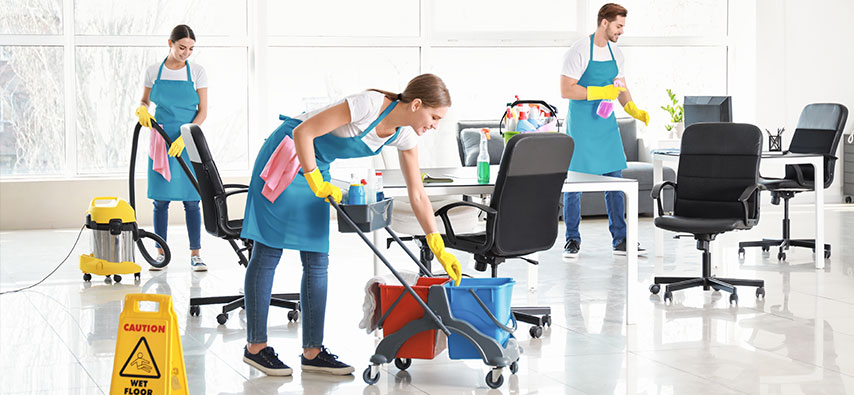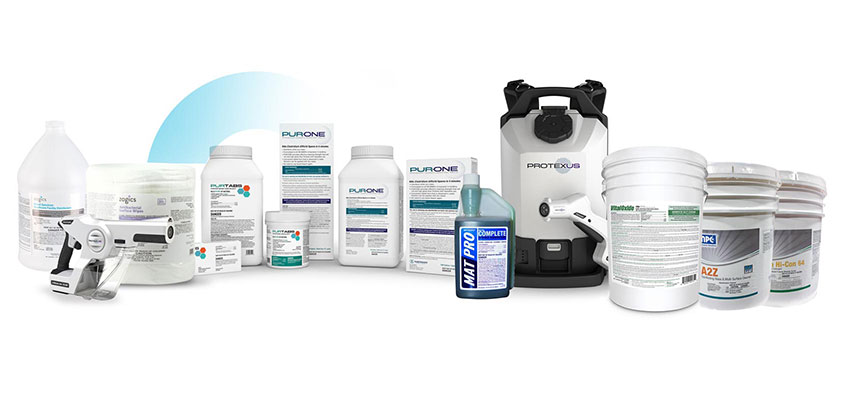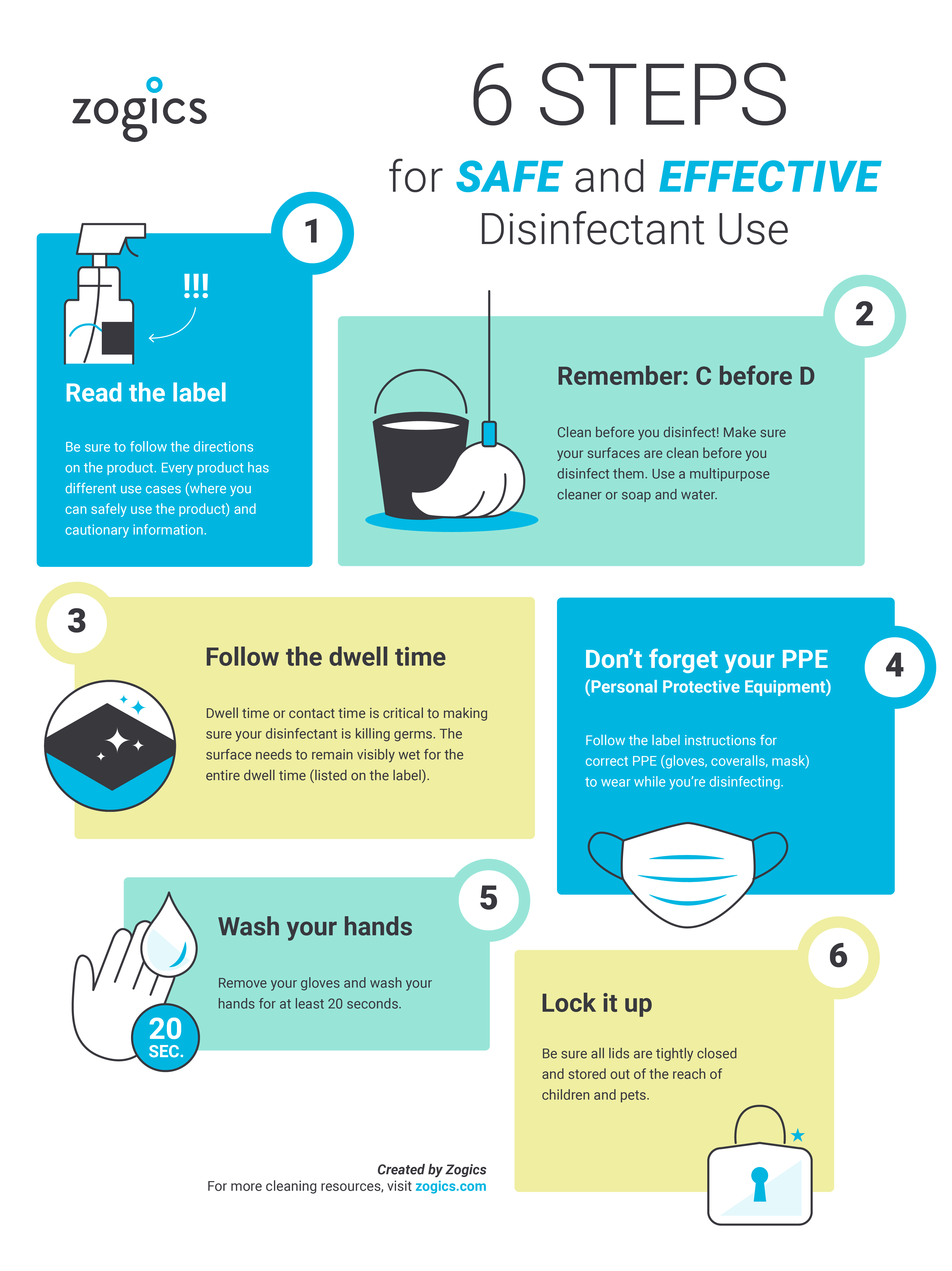Virus Protection and Prevention

Cleanliness and proper disinfection techniques are not only essential to keeping clients and staff safe, but are also important to the reputation of your business.
How often should I disinfect surfaces during COVID-19?
It all depends on use level and what surfaces you’re talking about. Routine cleaning and disinfecting are an important part of reducing the risk of exposure to COVID-19. Normal routine cleaning can reduce risk of exposure and is a necessary step before you disinfect dirty surfaces.
Surfaces frequently touched by multiple people, such as door handles, desks, phones, light switches, and faucets, should be cleaned and disinfected at least daily. More frequent cleaning and disinfection may be required based on level of use.
Cleaning refers to the removal of dirt and impurities including germs from surfaces. Cleaning alone does not kill germs. But by removing them, it decreases the number of germs and therefore any risk of spreading infection.
Disinfecting kills germs on surfaces. Disinfecting works by using chemicals to kill germs on surfaces. This process does not necessarily clean dirty surfaces or remove germs. But killing germs remaining on a surface after cleaning further reduces any risk of spreading infection.

What about sanitizing?
Sanitizing lies in between cleaning and disinfecting. According to www.flu.gov, sanitizing lowers the number of germs on surfaces to a safe level, as judged by public health standards or requirements, while disinfecting removes bacteria and viruses completely. You sanitize a surface by cleaning or disinfecting to reduce the risk of spreading infection. In essence, sterilizing destroys all forms of microbial life and is used mainly in healthcare and laboratory settings.
Do you disinfect, or do you sanitize?
In order to eliminate SARS-CoV-2, the virus that causes COVID 19, you should disinfect – not sanitize – because disinfectants are the only products approved by the EPA to kill viruses on hard surfaces. The main difference is that EPA-approved sanitizers only have claims for bacteria, while disinfectants have claims against both bacteria and viruses.

Ready to clean and disinfect? Go in order.
If disinfecting a surface is the task at hand—for example, you’re tackling desks that a classroom has just been used, or are ready to take care of the entryway to an office building (think doors, handles, counter tops)—the order of operations is important. Remember that “C” comes before “D”, so always clean before you disinfect.
First, clean the surface with a general all purpose cleaner to remove any visible waste particles. Second, rinse the surface with water, dry and then apply disinfectant. Make certain that you’re following the appropriate dwell times (see below) for the disinfectant to ensure that you’re killing all the germs.
We know how important it is to you that you’re maintaining safe and healthy spaces, so we’ve outlined the dwell time for our products that have been approved by the EPA for use against SARS-CoV-2, the virus that causes COVID-19. Following the proper dwell times will result in surfaces free of harmful pathogens.

Dwell Time Chart
| Disinfectant Product | EPA Recommended Dwell Times | Formulation Type |
| Zogics Antibacterial Wipes | 10 minutes | Ready to Use |
| Zogics Commercial Disinfectant Concentrate | 10 minutes | Dilutable |
| Commercial Disinfectants | 10 minutes | Dilutable |
| Bioesque Botanical Disinfectant Solution | 10 minutes | Ready to Use |
| PURTAB Tablets (for use with Protexus Sprayers) | 1 minute | Dilutable |
| PUR:ONE Disinfecting Tablets | 1 minute | Dilutable |
| Vital Oxide Commercial Disinfectant | 10 minutes | Dilutable/Ready to Use |
| MatGuard MatPRO Concentrated Disinfectant | 1 minute | Dilutable |
Key Areas and Touchpoints for Disinfecting
- Floors
- Walls
- Countertops
- Bathing areas
- Lavatories
- Tables
- Chairs
- Garbage pails
Athletic/Salon/Sps Surfaces
- Wrestling and gymnastic mats
- Athletic mats
- Exercise equipment
- Athletic training tables
- Physical therapy tables
- Athletic helmets
- Wrestling/boxing headgear
- Athletic shoe soles
- Foot spa surfaces
- Tanning bed surfaces
- Toilets, showers, floors
Janitorial/Sanitation Surfaces
- Cabinets
- Counters
- Doorknobs
Hospitality and Hotel Surfaces
- Office fixtures
- Refrigerators (exterior)
- Sinks/faucets
- Telephones
- Toilets/showers
6 Steps for Safe and Effective Disinfectant Use
Disinfect the proper way. Make sure your disinfecting game is on point with our six-step disinfecting infographic. Better yet, print this infographic and keep it in your janitorial closet as a quick reference!


Ready to stock up? We offer the best cleaning and disinfecting products, hands down.
We pride ourselves on bringing innovative products to the market at reasonable prices.
- Zogics is the #1 Distributor of EvaClean’s Infection Prevention System, featuring Protexus Electrostatic Sprayers and PURTABS disinfecting tablets
- Just introduced: our Disinfecting Atomizing Sprayer that works with any EPA-registered List N disinfecting solution.
- Fight germs with our premium wholesale cleaning supplies
FAQs
Which disinfectants are EPA-approved?
Any disinfectant on the EPA’s N-list is approved to fight COVID-19. The following are Zogics EPA-approved disinfectants: Zogics Antibacterial Wipes, Zogics Commercial Disinfectant Concentrate, Protexus Electrostatic Sprayers (when used with PURTABS), Zogics Disinfectant Atomizing Sprayer (when used with any EPA-registered disinfectant), PURTABS Disinfecting Tablets, PUR:ONE Disinfecting Tablets, Hi-Con 64 Neutral Commercial Disinfectant, A2Z Disinfecting Multi-Surface Cleaner, MatGuard MatPRO Commercial Surface Disinfectant and Vital Oxide Commercial Surface Disinfectant.
Which disinfectants are effective against coronavirus?
There are dozens of sprays, cleaners and wipes sold to clean and disinfect non-porous surfaces from SARS-CoV-2, the virus that causes COVID-19. The EPA offers an extensive list of disinfectant products that meets its criteria to combat SARS-CoV-2. Make sure to follow the recommended contact or dwell time, which is the amount of time the product should remain on a surface before being wiped away.
Are disinfectants pesticides?
Disinfectants, along with sanitizers and sterilizers, are classified as pesticides, and the Federal Insecticide, Fungicide, and Rodenticide Act (FIFRA) requires that they be registered with the Environmental Protection Agency (EPA). Disinfectants and sanitizers kill bacteria, viruses, and fungi. According to the EPA these are considered pests just as insects, weeds, snails, and slugs are considered pests. Therefore, the EPA classifies disinfectants and sanitizers as pesticides.
Which disinfectants are the best at destroying germs?
To disinfect surfaces, the CDC recommends a household bleach or alcohol solution (see below for details), and points to a list of disinfectant products registered by the U.S. Environmental Protection Agency (EPA) that have qualified for use against the novel coronavirus. Washing with soap or water is the best way to rid the virus from your hands, the agency adds, but if soap and water aren't available, an alcohol-based hand sanitizer with at least 60% alcohol may be used.
Why are disinfectants used?
Disinfectants are used to kill infectious organisms including viruses and bacteria on non-porous surfaces such as door handles, countertops, sinks, etc. Killing these organisms helps to stop the spread of viruses and diseases and protect human health.
When should disinfectants be used?
You should clean and disinfect housekeeping surfaces (e.g., floors, tabletops) on a regular basis, when spills occur, and when these surfaces are visibly soiled. Environmental surfaces should be disinfected on a regular basis (e.g., daily, three times per week) and when surfaces are visibly soiled.
Are disinfectants dangerous?
When misused, or not used according to the label, disinfectants can be dangerous. Never combine products and never use them in any way other than as directed on the label.
Will disinfectants kill viruses?
Yes, disinfectants kill viruses, when used properly according to the directions on the label.. Cleaning and disinfecting indoor surfaces can shorten a viruses lifespan, provided it’s done correctly – clean first, then disinfect.
